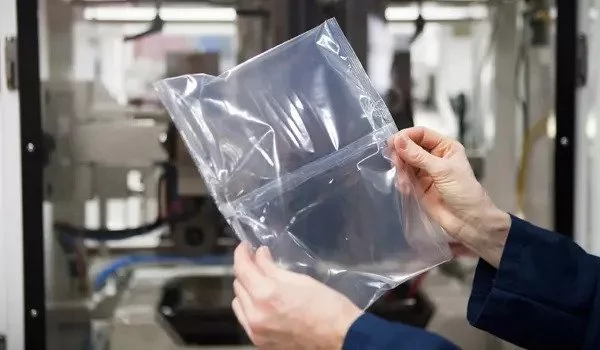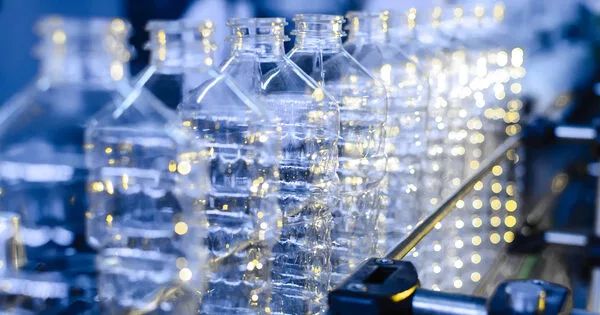Innovative methods that aim to break down plastic trash into its basic building components, enabling the development of new plastic materials, are referred to as advanced recycling. In contrast to traditional recycling procedures, which frequently require melting plastic to create lower-grade materials, sophisticated recycling technologies can produce high-quality polymers that are practically indistinguishable from virgin materials. This technique has the potential to provide various environmental benefits, including lower greenhouse gas (GHG) emissions.
According to research, pyrolysis recycling of post-use plastic can cut GHG emissions by 18-23%. The approach has the potential to improve sustainability by reducing waste and reliance on fossil fuels.
According to studies from the U.S. Department of Energy’s (DOE) Argonne National Laboratory, producing new plastic through improved recycling of post-use plastic (PUP) rather than fossil-based manufacture can cut greenhouse gas emissions (GHG) and raise the U.S. recycling rate. The peer-reviewed life cycle analysis study will be published in the Journal of Cleaner Production in November 2023.
This is the first study of many US factories recycling PUP into new plastics. The new plastics are low-density polyethylene (LDPE) and high-density polyethylene (HDPE). Pyrolysis is the recycling method employed, in which polymers are heated to high temperatures in an oxygen-free environment. The primary product is pyrolysis oil, a liquid mixture of different chemicals that can be used to make new plastic. The oil can be used to replace fossil materials like as naphtha and gasses in the production of ethylene and propylene. They are two key monomers, or building blocks, in the manufacturing of plastic.
As advanced recycling becomes increasingly efficient, it is poised to play a major role in achieving global sustainability goals by reducing waste and GHG emissions.
Pahola Thathiana Benavides
The study gathered operational data from eight enterprises with varied pyrolysis oil production procedures from 2017 to 2021. while compared to crude oil-derived LDPE and HDPE, the investigation demonstrates an 18% to 23% reduction in GHG emissions while using only 5% pyrolysis oil from PUP.
When current end-of-life procedures for many plastics in the United States, such as incineration, are taken into account, there is an additional 40% to 50% decrease in GHG emissions when manufacturing pyrolysis-based LDPE and HDPE, respectively, according to the analysis. Reductions in the European Union are substantially larger (up to 131%), as more PUP is being burned.
“As advanced recycling becomes increasingly efficient, it is poised to play a major role in achieving global sustainability goals by reducing waste and GHG emissions,” said Argonne Principal Energy Systems Analyst Pahola Thathiana Benavides, a study author. ?”It can transform hard-to-recycle plastics into a multitude of high-value raw materials, reducing the need for fossil resources and potentially minimizing the environmental impact of waste management.”

Advanced recycling allows PUP to be used to manufacture important industrial chemicals while also developing markets for reclaimed plastic products. Pyrolysis is one of the most popular sophisticated technologies used on an industrial scale to convert PUP that cannot be converted into new products through conventional techniques.
In addition to GHG emissions, the Argonne researchers examined the consequences of PUP conversion on fossil energy, water use, and solid waste. When 5% recycled materials are used instead of virgin materials, the most likely scenario results in a 65% to 70% decrease in fossil energy use, a 48% to 55% reduction in water use, and a 116% to 118% reduction in solid waste.
The Greenhouse Gases Regulated Emissions and Energy Use in Technologies (GREET) model from Argonne, which has over 55,000 users globally, was used in the study. GREET is widely utilized by the DOE and other agencies, notably the US Environmental Protection Agency.
Other researchers on the project include Argonne Principal Energy Systems Analyst Uisung Lee, Energy Systems Analyst Ulises R. Gracida-Alvarez, and Interim Energy Systems and Infrastructure Analysis Division Director Michael Wang. The American Chemistry Council funded the research.
Environmental outcomes
While the Argonne researchers investigated numerous scenarios for pyrolysis oil used as a raw material for new plastic products (HDPE and LDPE), the most likely scenario of 5% recycled materials showed the following savings when compared to virgin production:
- GHG emissions range from 18% to 23%.
- Use of fossil fuels: 65% to 70%
- Water consumption ranges from 48% to 55%.
- Solid waste: 116%-18%
















